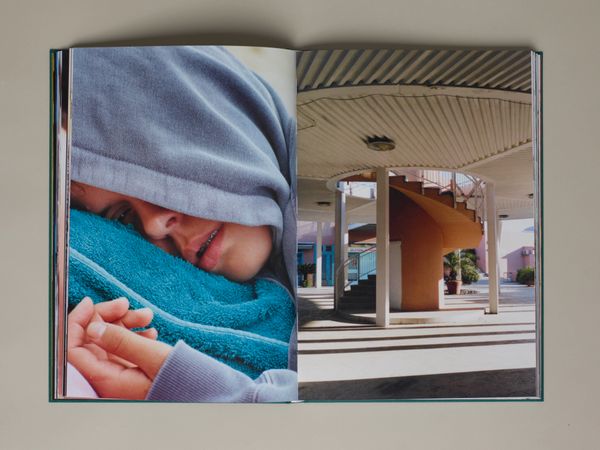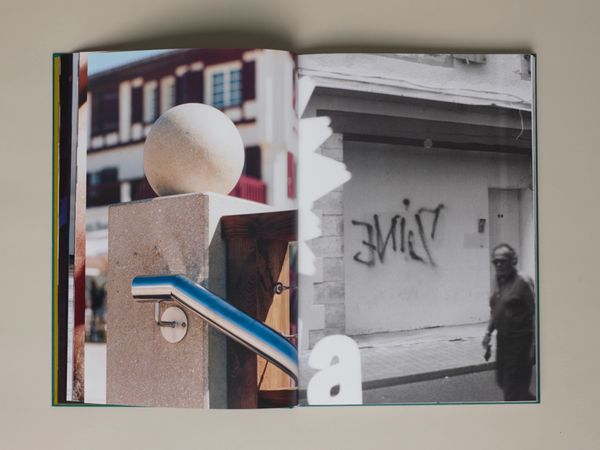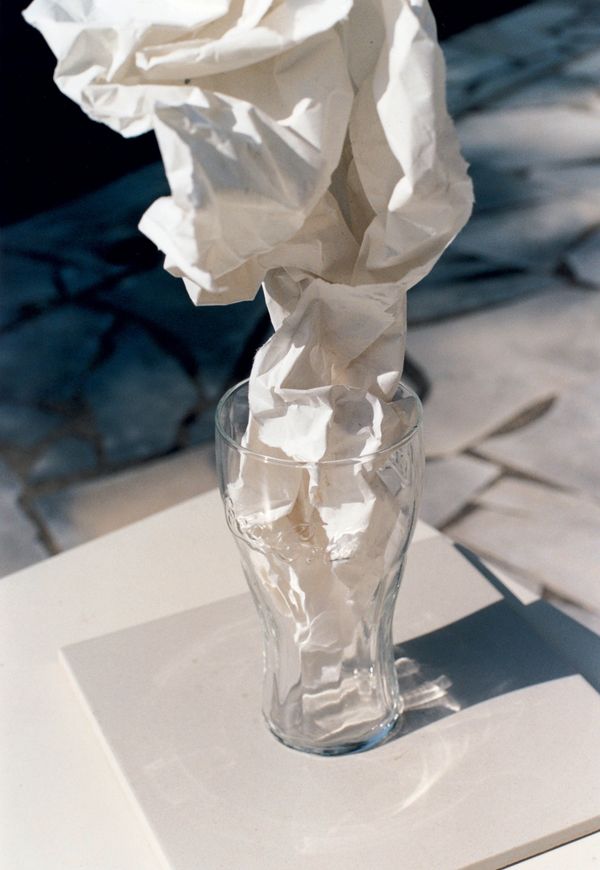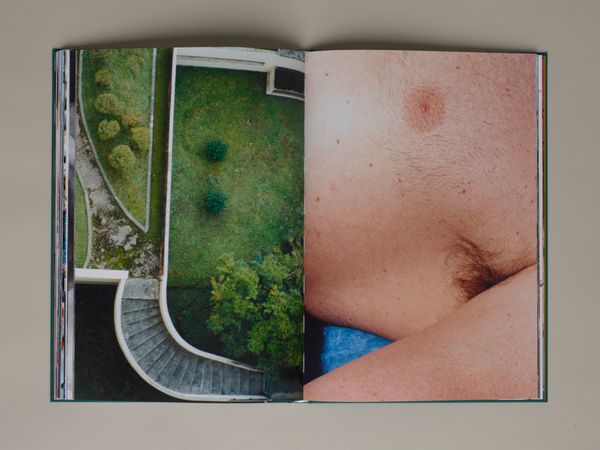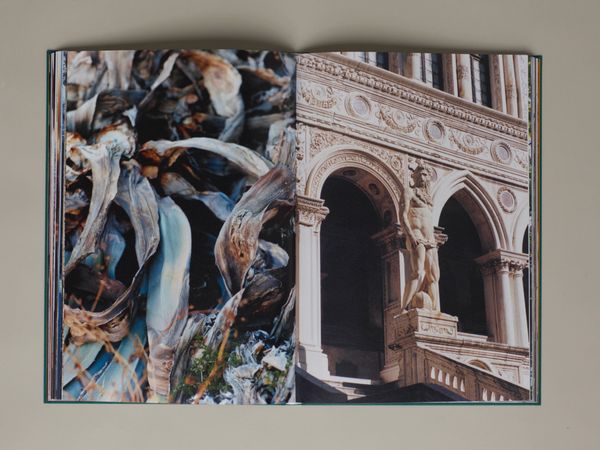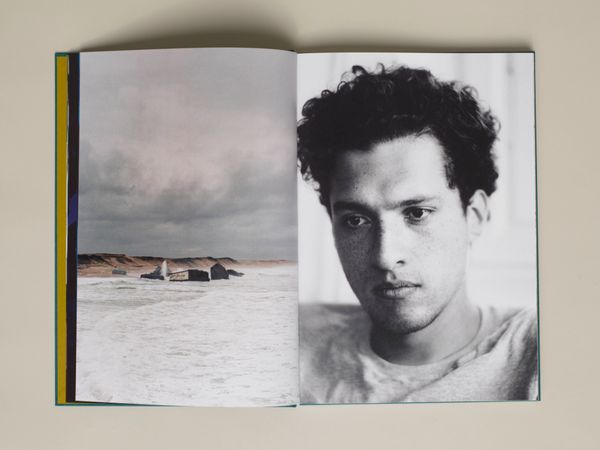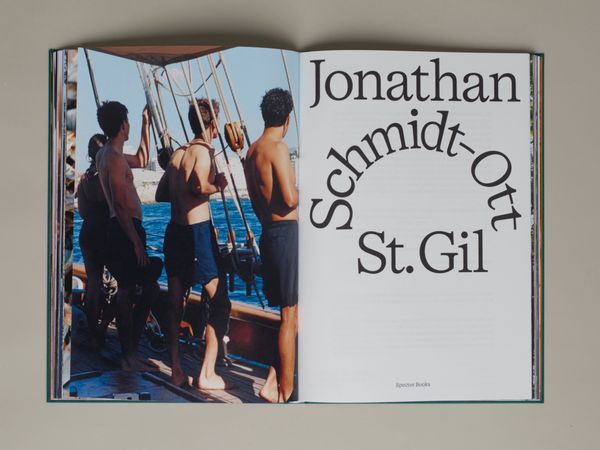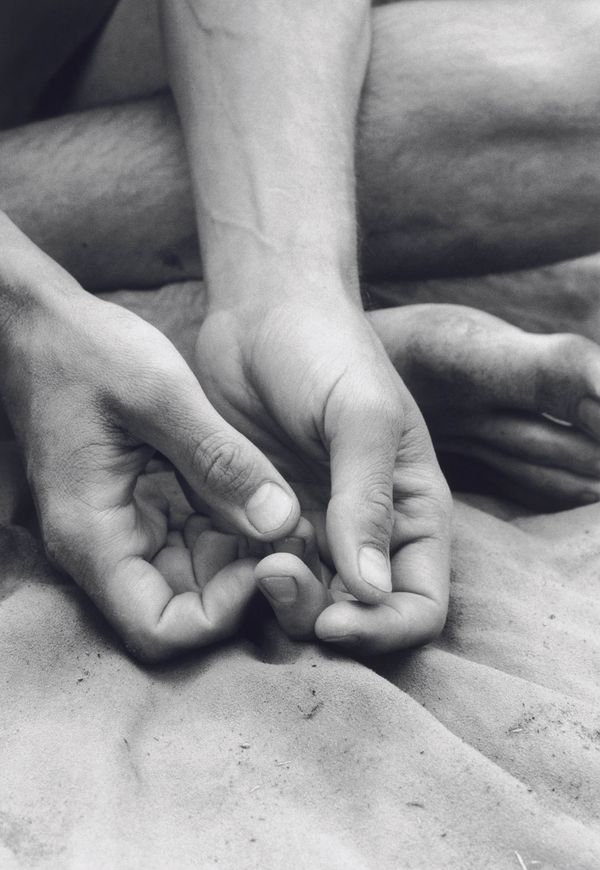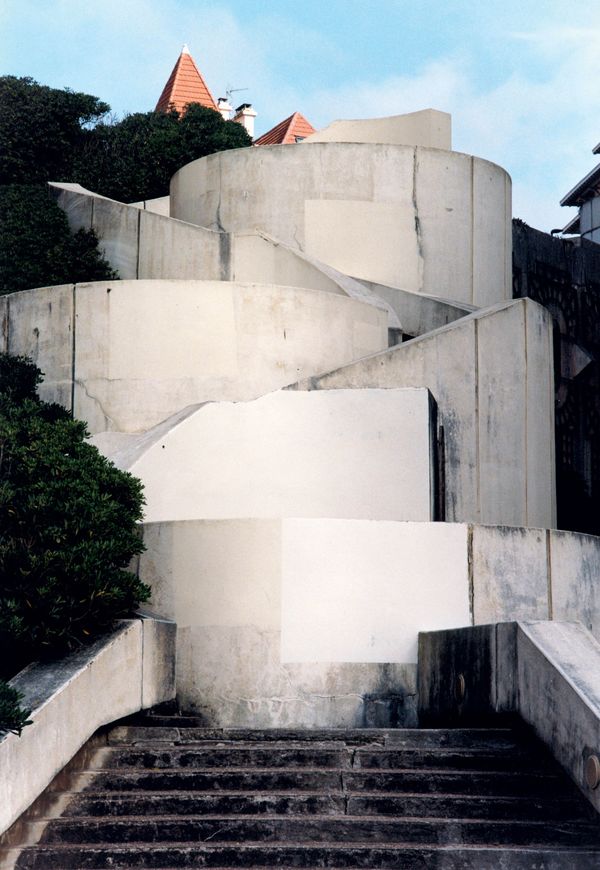Photobook Review: St. Gil by Jonathan Schmidt-Ott
-
Published14 Jan 2025
-
Author
An ode to the lack of photographic intention, a tribute to the viewer's imagination and interpretative power, St.Gil is a book of visual riddles set in a seemingly never-ending summer afternoon.
We walk through St. Gil, Jonathan Schmidt-Ott’s publication released by Spector Books, jumping from a diptych to the other. Each pair of photographs is a line in a poem, or a poem of its own. Sensations are triggered that are hard to verbalize. They feel like rhetoric figures whose rules we cannot tell. Our mind is pushed to think graphically. Impossible things start to happen - birds fly in a perfect line straight into the closed eyes of a man. A garden shot from above and a close-up of a hairy chest give shape to one geometry, making perspective and distance clash. Crumpled paper in a glass feels like smoke, rising.
Where are we? The title suggests one possible place, St. Gil. A sleeping, seaside neighborhood living a perpetual summer afternoon. “The photos are taken in Berlin, where I live, and in other places I visit frequently – Paris, Marseille, Venice, and South-West France, like Biarritz”, Schmidt-Ott discloses as I ask. Time and place are scattered, yet they collapse in one imaginary spot. Images are tightly cropped, with cities and bodies reduced to visual splinters. “I fell in love with this portrait lens which limits the field of vision a lot”, he says. “You create a new context by cutting the surroundings out. The field of depth being quite narrow, what you get are fragmented pieces. You forget to think of where things are”.
The rhythm of the diptychs is tight, as if images were bound together by some magnet-like force. “I studied film editing, and I was working as an editor for a long time. Constructing through montage comes naturally to me. With St. Gil, I spent a lot of time working out image combinations”, explains Schmidt-Ott. “I started by making little 15x10 prints, setting them up on six large tables. Friends came by - it always helps to work with someone with an outsider's view, especially to break up time and location. The decision to always have diptychs eventually had a tremendous effect on the edit. It created this flow of two things constantly mirroring each other, with recurring themes you realize progressively”.
We jump from straight portraits to ephemeral sculptures, from brutalist architecture to skin close-ups, from street signs to algae and found objects. The effect is hypnotic. Page after page, it feels as if the rules of a parallel world were being built – and they work like riddles. On the left page a girl is lying on a towel, her head partially covered in a hoodie. On the right, we see a concrete spiral staircase. They are like parts of one shared body, with the book’s binding physically stitching them together. “I would always ask people to look very expressionless, as if almost empty”, Schmidt-Ott says. “Whatever you then pair the portraits with, it charges these expressionless faces. Perhaps, this creates some sort of mystery”.
The mystery is a constant in this wordless book. A substantial ambiguity that suffocates as you try to explain it. There is a tension that only lies in the unexpressed, in visual binds that are impossible to disentangle logically. “I think in my photographic practice there is never an intention”, says Schmidt-Ott. “I believe it helps not to have a clear theme set from the start so that the viewer doesn't go like: ‘this is about this and that’. You just set a scene. And the good part is, the more you leave the viewer alone, the more they will put of themselves inside”.
If I were to say what St. Gil is about - other than perpetual summer in this non-existent town - I’d say it is about how the things we see influence us. About how images trigger other images. I would say it is a workbook for our visual intelligence, a reminder to defy articulated thought and to linger in almost bodily sensations. In connections that happen at a neuronal level, deep down, yet ephemeral and ready to dissolve as we flip to the next page.
What images have influenced Schmidt-Ott? He mentions growing up in an architect household, “where the modern approach to architecture was very present”. A picture shows colorful plastic bottles, placed sculpturally on top of each other. “They are little montage pieces I do by playing around with found objects. I only realized recently that when I was a child, we used to go to the beach in France, and there was all this washed plastic. My dad used to make collages on frame boards, which had these intense colors”. Cinema is a lot on his mind, too. “I studied film history for almost five years. Andrei Tarkovsky had a lot of influence on me. I didn't look at his films after my studies, maybe because I had watched them too many times. The other day I happened to see the beginning of Solaris. I almost felt ashamed – subconsciously, I copied a lot: I think of algae in the water, horses, nature, and so on”. “We all consume a lot of imagery”, he adds, “and I believe that somehow influences us very strongly. I think the things we find in our surroundings are reminding us of some other things that we've seen before”. The whole book could, maybe, be summarized in this sentence. Or in the story behind the title - St. Gil.
Many street signs appear throughout the pages. St. Gil is one of them, painted in yellow. “I wanted the book not to be ever interrupted by graphic design. Instead, these photographs of street typography would work as headlines. I took the St. Gil picture in the Pyrenees, a hairdresser sign in a little village. I later read more about the Saint: he was from Greece and settled in Provence. He lived in the woods, secluded from society, drinking the milk of a deer. When the king's hunters came, they tried to shoot the deer. He went in between and got wounded. As an apology, the king built a monastery after him. He became the Saint of the suffering. A lot of hospitals and pharmacies are called Saint Gilles, especially in French-speaking countries and I think there are about 19 cities that are named after him as well in the English-speaking world – plus, a paint color by a fancy English brand is named St Giles Blue. These are all things I found out later. But I think this title is basically like taking a photograph. You just find something, you react to it, you like the shape of the word, and it doesn't have any deeper meaning apart from what you've seen, and the way you felt”.
--------------
St. Gil is published by Spector Books
142 pp.
numerous black-white and colour photographs
thread-sewn hardcover
Leipzig July, 2024
ISBN: 9783959058643
Width: 23.5 cm
Length: 34 cm
Language(s): English
Editor: Jonathan Schmidt-Ott
Designer: Florian Lamm, Caspar Reuss
Essay: Lukas Feireiss, Patrick James Reed
Photographer: Jonathan Schmidt-Ott
-------------
All images © Jonathan Schmidt-Ott
--------------
Jonathan Schmidt-Ott (b. 1976, DE) is a Berlin-based artist, photographer, curator and film-editor.
Camilla Marrese (b.1998) is a photographer and designer based in Italy. Her practice intersects documentary photography, design for publishing and writing, aiming for the expression and visual articulation of complex issues.
